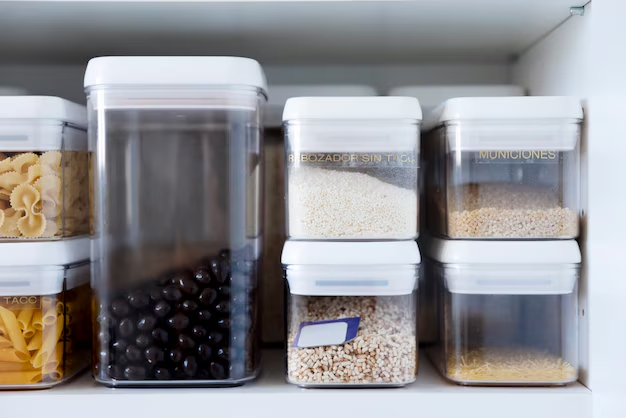Is Storing Flour in the Refrigerator a Good Idea? Unpacking the Myths and Facts
Picture this: you're in the middle of whipping up your favorite batch of cookies, and suddenly, you wonder if the flour you've been storing in the pantry is still fresh. The question pops into your head—"Can I store flour in the refrigerator to keep it fresh longer?" It's a common query for many home cooks and baking enthusiasts, aiming to extend the shelf life of this essential ingredient. Let’s dive into the world of flour storage to discover if refrigeration is the answer.
🥖 Understanding Flour Types and Their Storage Needs
Different Types of Flour
Flour isn’t a one-type-fits-all product. Knowing the type of flour you have is the first step in determining the appropriate storage method.
- All-Purpose Flour: Used in a wide variety of recipes, it has a moderate protein content.
- Whole Wheat Flour: Contains the entire grain, thus more oils, making it prone to rancidity.
- Gluten-Free Flour: Often made from a variety of grains and tend to have a different shelf life.
- Self-Rising Flour: Includes leavening agents which may degrade over time if not stored properly.
Why Flour Goes Bad
Flour can go bad, impacting the taste and safety of your baked goods. The key factors that contribute to flour spoilage include:
- Moisture: Promotes mold growth.
- Heat: Speeds up the degradation process.
- Insects: Flour beetles and other pests love pantry environments.
- Rancidity: Particularly in whole grain flours due to natural oils.
🥶 The Refrigerator Debate
Does Refrigerating Flour Extend Its Shelf Life?
The debate about refrigerating flour is ongoing. Here are some points to consider:
Pros:
- Reduced Pest Risk: Cold temperatures deter flour beetles and other pests.
- Slower Rancidity: Particularly beneficial for whole grain flours and nut flours that can go rancid quickly.
Cons:
- Moisture Absorption: Flour can absorb moisture from the fridge, leading to clumping and spoilage.
- Space: Storing bags of flour in the refrigerator can take up a lot of room.
Practical Flour Storage Tips
Refrigeration is not always necessary for every type of flour. Here's a shortlist of practical tips:
- Pantry Storage: Store in a cool, dry place in airtight containers to protect against pests.
- Freezer Storage: For longer storage, freezing flour can extend its usability without the moisture issues of refrigeration.
- Use By Date: Always check this to determine the freshness of your flour.
👩🍳 How to Store Different Types of Flour
All-Purpose and Bread Flours
These are the most commonly used types of flour. For them, pantry storage is typically sufficient, provided the conditions are right:
- Recommended Storage: A cool, dark pantry in an airtight container.
- Shelf Life: Typically 6 to 8 months in the pantry, up to a year in the freezer.
Whole Wheat and Nut Flours
Due to higher oil content, these flours are more prone to spoilage.
- Recommended Storage: Refrigeration or freezing in airtight containers.
- Shelf Life: Up to 3 months refrigerated, 6 months in the freezer.
Gluten-Free Flours
These flours vary widely in their composition.
- Recommended Storage: Often best frozen due to diverse ingredients.
- Shelf Life: Up to 6 months in the pantry, 1 year in the freezer.
📝 Summary of Key Takeaways
Here's a quick recap of the key points for optimal flour storage:
- 🥶 Whole Wheat & Nut Flours benefit from refrigeration or freezing to slow rancidity.
- 📂 All-Purpose & Bread Flours thrive best in cool, dry pantries, away from sunlight.
- 🐜 Use Airtight Containers to guard against pests and moisture regardless of storage location.
- 📅 Check Use By Dates regularly to ensure freshness.
- ❄️ Freezing is an excellent option for long-term storage without moisture issues.
🏡 Making Storage Decisions: What's Best For Your Kitchen?
Deciding where to store your flour depends on several factors, including the type of flour, the climate you live in, and the space available in your kitchen. If you live in a humid area, refrigeration or freezing might be a better choice to prevent mold growth. For those with limited fridge space, investing in airtight containers for pantry use might be more practical.
Ultimately, understanding the unique needs of each type of flour and how external factors impact shelf life will empower you to make the best storage decision for your baking and cooking needs. With these insights, you're well on your way to keeping your flour fresh and your baked goods tasting their best.
